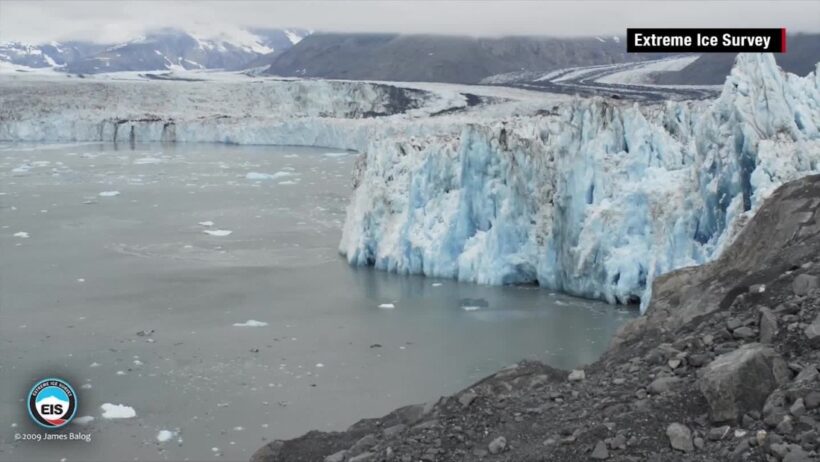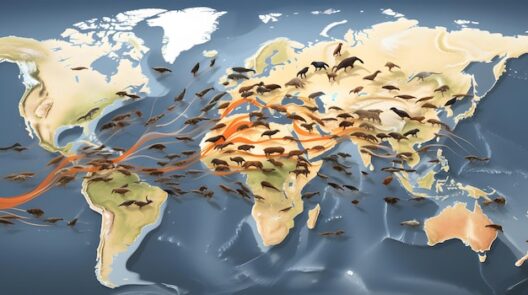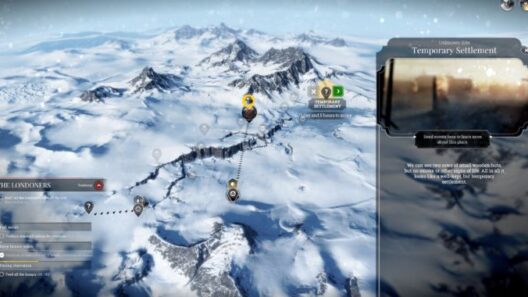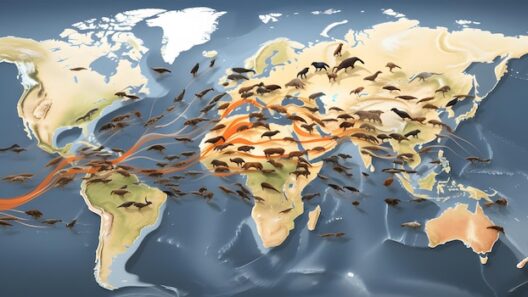Global warming primarily evokes images of melting ice caps, rising sea levels, and increasingly severe weather patterns. Yet, amidst these alarming realities lies an intricate paradox that captivates climate scientists and laypeople alike: can global warming paradoxically precipitate the onset of an ice age? This question invites a nuanced exploration of the complex interplay between climate systems and the mechanisms governing them.
At first glance, it may seem illogical to posit that a warming world could incite a return to ice age conditions. However, history presents a tapestry of climatic transitions where warming periods have precipitated shifts in global climatic patterns, notably leading to cooler regional climates. This phenomenon allows us to plunge deeper into understanding not only the mechanics but also the complexities of Earth’s climate systems.
The essence of this paradox lies in the interconnectedness of Earth’s climatic components. The climate is governed by various factors, including atmospheric thermodynamics, oceanic currents, and geophysical conditions. Among these, ocean currents play a pivotal role. For instance, the Gulf Stream, a warm Atlantic ocean current, conveys heat from the tropics to the northern latitudes. Disruption in this current’s flow can lead to significant regional cooling, notwithstanding a globally rising temperature trend.
One pivotal consideration is the potential impact of the influx of freshwater into the North Atlantic, a consequence of polar ice melt due to global warming. As glaciers and ice sheets disintegrate, this runoff can dilute the salty water that drives thermohaline circulation—an essential component of ocean currents. A weakened Gulf Stream could ultimately slow down or even reverse the warming trends in Europe and North America, thus setting the stage for colder climatic conditions reminiscent of an ice age.
This was observed during past climatic epochs, particularly during the abrupt cooling of the Younger Dryas, which occurred approximately 12,900 to 11,700 years ago. Theories posit that massive meltwater from the Laurentide Ice Sheet disrupted the North Atlantic current, triggering a sudden plunge into cold conditions. Such historical precedents underpin the notion that, under the right conditions, warming can indeed set in motion mechanisms conducive to significant cooling.
Another significant aspect to consider is the role of atmospheric changes induced by a warming planet. Increased greenhouse gas concentrations elevate average temperatures but can simultaneously lead to changes in cloud cover and atmospheric circulation patterns. Changes in global temperature can affect the circulation of the jet streams, possibly rendering them less stable. A shift in the jet streams can lock cold air in specific regions, facilitating prolonged cold spells—a condition notably observed in the Polar Vortex phenomena.
These variable climatic feedback loops illustrate the intricate balance governing Earth’s climate. While global temperatures trend upwards, regional climatic anomalies and localized cooling can occur, hinting at both variability and unpredictability in climate behavior. This gives rise to the concern that the ramifications of global warming may unfold in unexpected ways, not necessarily adhering to linear patterns of heat increase.
Moreover, the interaction between climate and human activity cannot be overlooked. Urbanization, land-use changes, and deforestation modify local and regional climates, potentially exacerbating or mitigating broader atmospheric shifts. The consequences of these anthropogenic alterations often manifest in surprising climatic shifts, revealing the profound complexity of climate dynamics in a warming world.
Public perception typically hinges on the immediate and visible effects of climate change—erosion of coastlines, extreme weather events, and ecological upheaval. Yet, the more insidious potential for a cooling phase in certain regions commands attention. While the prospect of an ice age may seem distant or unlikely, engendering a collective awareness of these possibilities is crucial in understanding the far-reaching implications of our current trajectory. The scientific community remains vigilant, attempting to decipher the myriad puzzles presented by Earth’s complex climate systems.
Rather than promoting fear, this discourse underscores the necessity for adaptable strategies to mitigate climate change’s adverse effects. Governments and organizations must prioritize comprehensive climate action, embracing both mitigation and adaptation measures. Investing in renewable energy sources, enhancing energy efficiency, and safeguarding natural carbon sinks can collectively counteract the detrimental impacts of global warming, thereby averting potential alterations in climate patterns.
Ultimately, understanding that a warming planet holds the potential paradox of heralding an ice age in specific regions compels a reevaluation of climate narratives. The intricate relationships between temperature, ocean currents, and atmospheric phenomena reveal the complex tapestry of Earth’s climate systems. These dynamics encourage constant vigilance and adaptability in our approach to climate change.
The tantalizing prospect of understanding future climate scenarios hinges upon ensuring public discourse embraces complexity. The fascination surrounding the possibility of a warming world inducing an ice age encapsulates the broader challenges posed by climate change—an enduring subject that demands rigorous inquiry and collective action. As we navigate this uncharted territory, fostering an informed, engaged populace will be paramount in shaping resilient moderations for our planet’s future.







